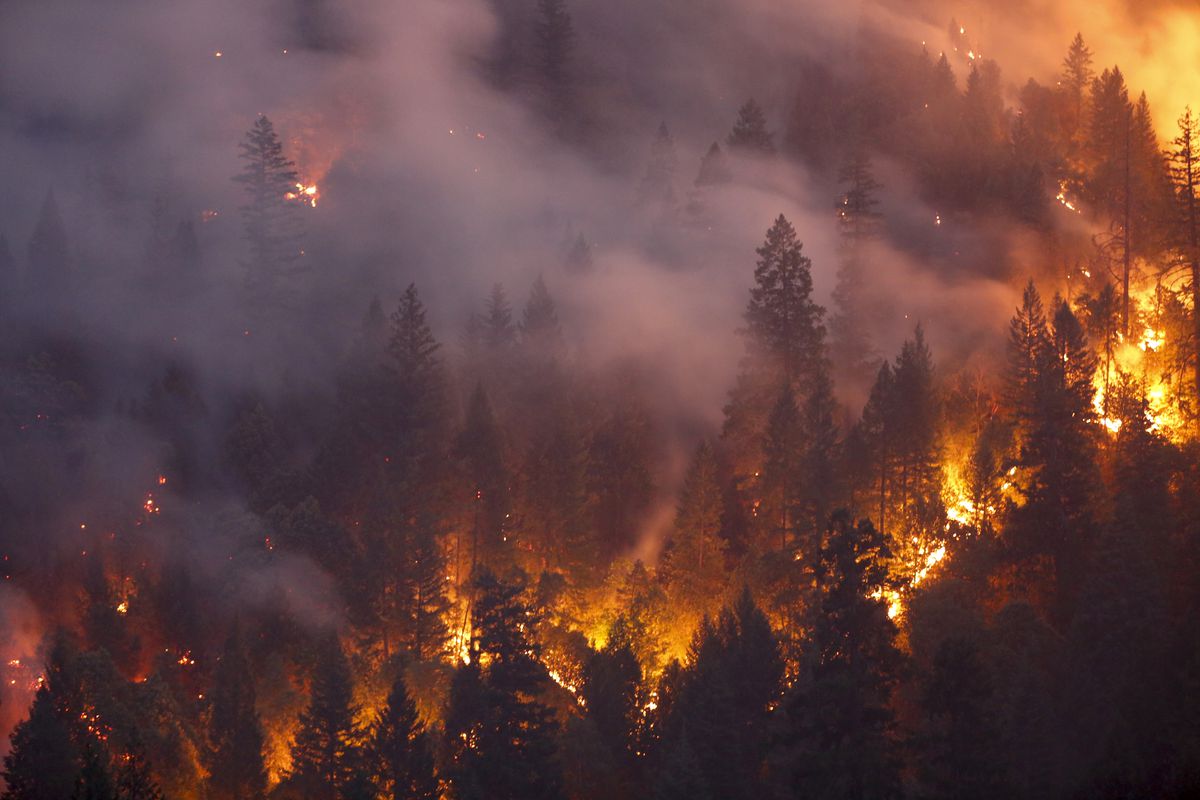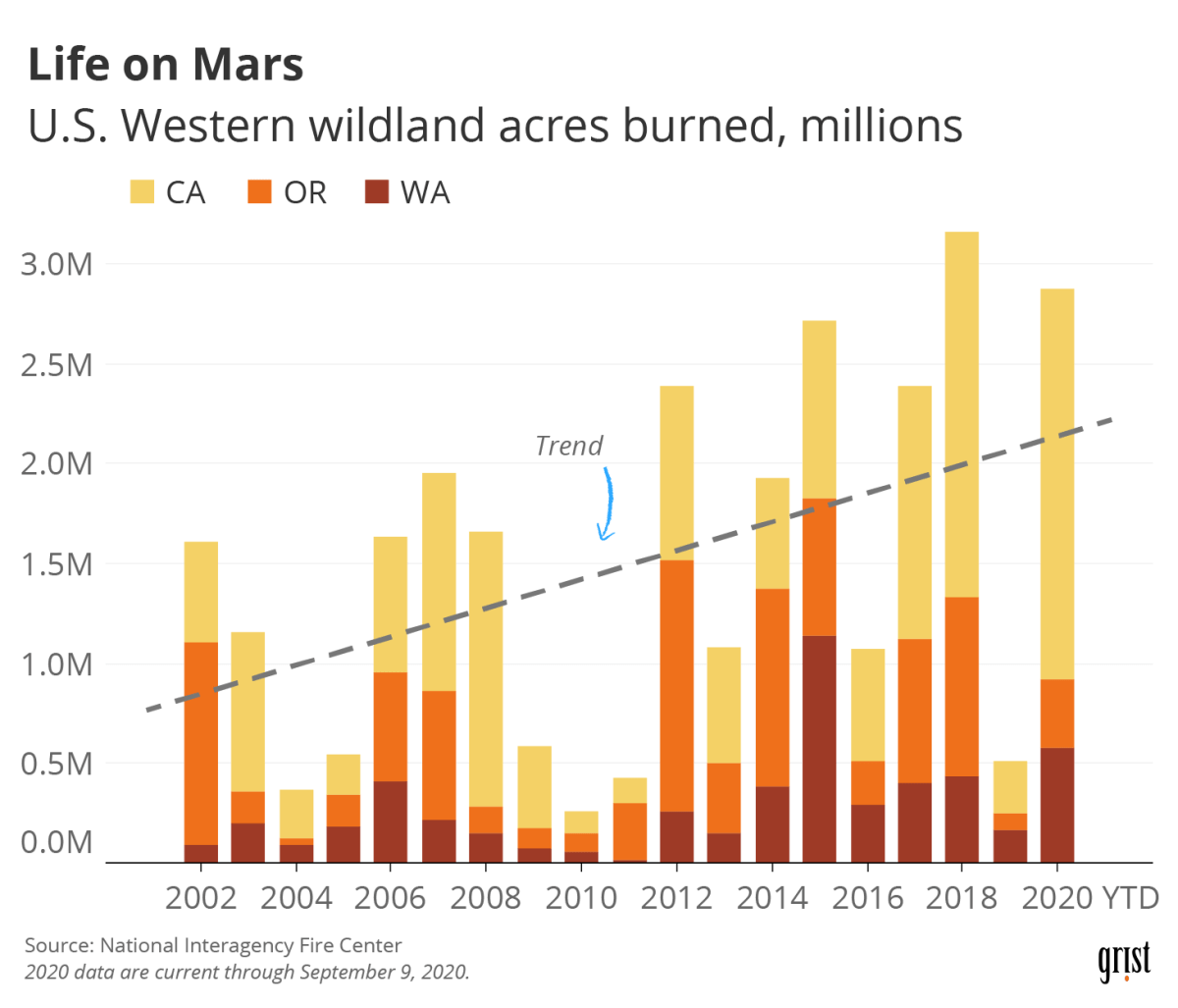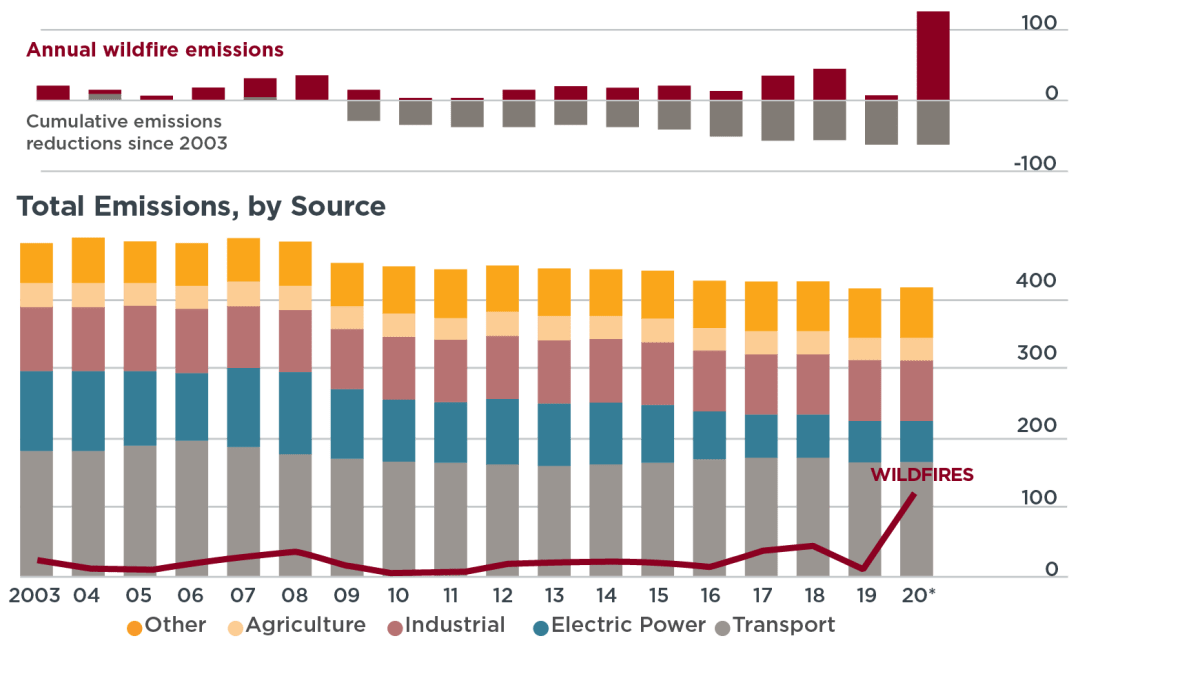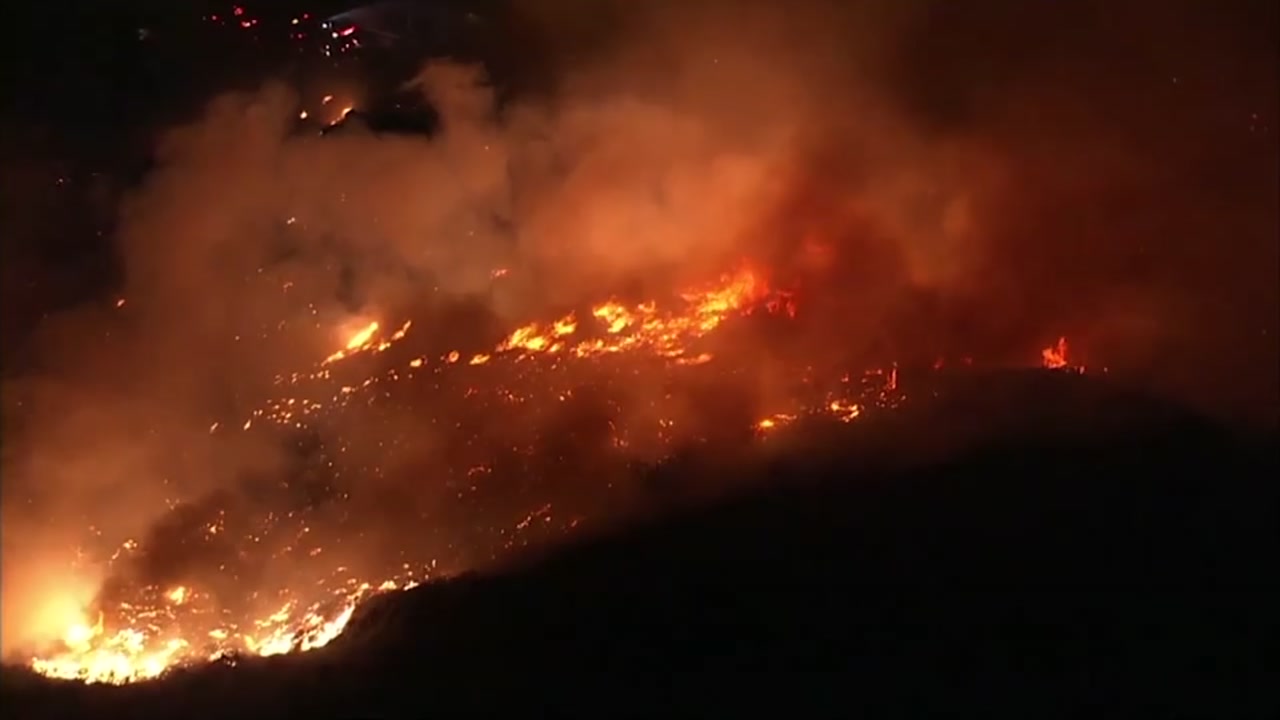Climate change: What role is it playing in the California fires? The answer is increasingly clear: a significant one. California’s wildfire season has become longer, more intense, and more frequent, directly linked to rising temperatures, prolonged droughts, and shifting weather patterns exacerbated by climate change. This isn’t just about bigger fires; it’s about a fundamental shift in the state’s ecosystem, impacting everything from vegetation to the very structure of its fire seasons.
We’ll explore the complex interplay between climate change and California’s wildfires, examining how rising temperatures dry out vegetation, turning forests into tinderboxes. We’ll look at how altered precipitation patterns affect fuel availability and how changes in wind patterns influence fire spread. Finally, we’ll delve into the projections for the future and discuss potential mitigation strategies to lessen the devastating impact of these increasingly frequent and severe blazes.
Climate Change and California Wildfires
California’s wildfire season has become increasingly intense and destructive in recent decades. This escalation is significantly linked to climate change, a phenomenon driving shifts in temperature, precipitation, and vegetation patterns, all of which contribute to a higher risk and severity of wildfires.
The Impact of Climate Change on California’s Wildfire Season
Rising temperatures, prolonged droughts, and altered precipitation patterns are key elements in the worsening wildfire situation. These factors interact in complex ways to create a perfect storm for devastating wildfires.
Rising temperatures directly increase the flammability of vegetation. Higher temperatures dry out fuels, such as grasses, shrubs, and trees, making them more susceptible to ignition and rapid spread. Prolonged droughts exacerbate this effect by depleting soil moisture and further drying out vegetation. This creates an environment where even a small spark can quickly escalate into a large and uncontrollable fire.
Changes in precipitation patterns also play a crucial role. More intense rainfall events, followed by prolonged dry periods, create a boom-and-bust cycle of vegetation growth. Rapid vegetation growth during wet periods leads to an accumulation of dry fuel during subsequent dry periods, creating a massive fuel load that is readily available for combustion.
| Year | Acres Burned (millions) | Number of Fires | Average Fire Size (acres) |
|---|---|---|---|
| 2013 | 0.7 | 7,000 | 100 |
| 2014 | 0.4 | 6,000 | 67 |
| 2015 | 0.8 | 7,500 | 107 |
| 2016 | 1.2 | 8,000 | 150 |
| 2017 | 2.0 | 9,000 | 222 |
| 2018 | 2.5 | 10,000 | 250 |
| 2019 | 2.2 | 9,500 | 232 |
| 2020 | 4.0 | 11,000 | 364 |
| 2021 | 2.6 | 8,500 | 306 |
| 2022 | 1.8 | 7,800 | 231 |
Note: These are illustrative figures and may vary depending on the data source. The trend of increasing acreage burned and average fire size is consistent across multiple datasets.
Specific Climate Change Factors and Wildfire Behavior, Climate change: What role is it playing in the California fires

Climate change influences wildfire behavior in several ways, affecting the spread, timing, and frequency of fires.
Altered wind patterns, intensified by climate change, can dramatically increase the speed and reach of wildfires. Stronger winds carry embers over greater distances, leading to spot fires and rapid fire expansion. The timing and duration of the wildfire season are also shifting, with earlier starts and later ends, extending the period of risk. This is a direct result of warmer temperatures and drier conditions persisting for longer periods.
A strong correlation exists between extreme heat events and increased wildfire frequency. Heatwaves create tinder-dry conditions, increasing the likelihood of ignition and rapid fire spread. A visual representation of this relationship would show a three-dimensional graph, with temperature on one axis, humidity on another, and wildfire intensity (measured by acres burned or fire spread rate) on the third.
The graph would demonstrate a clear increase in wildfire intensity with higher temperatures and lower humidity.
Vegetation and Fuel Load Changes Due to Climate Change

Climate change is altering vegetation types and fuel loads in California’s fire-prone areas, increasing the risk and intensity of wildfires.
The shift towards drier conditions favors the growth of more flammable vegetation, such as invasive grasses and shrubs, at the expense of moisture-retaining species. For example, chaparral, known for its high flammability, thrives in dry conditions, while some conifer species are becoming more susceptible to drought and insect infestations, making them more prone to burning. The flammability of different vegetation types varies significantly.
Chaparral and dry grasses are highly flammable, while some hardwood species are less so. However, even less flammable species can become highly combustible under prolonged drought conditions.
- Increased presence of invasive grasses (e.g., cheatgrass)
- Expansion of chaparral into previously forested areas
- Increased density of dead trees due to drought and insect infestation
- Changes in the timing of plant growth and dormancy, leading to longer periods of dry, flammable vegetation
Climate-driven changes in forest density also influence wildfire spread and intensity. Denser forests, often resulting from fire suppression policies, create more continuous fuel loads, allowing fires to spread rapidly. Conversely, some thinning treatments can reduce fuel loads and create firebreaks.
California’s wildfires are getting worse, fueled by climate change’s impact on drought and extreme heat. It’s a stark contrast to the seemingly minor incident involving Ontario Premier Doug Ford, as reported in this article: ‘This head’s like limestone’: Ontario Premier Doug Ford unhurt after. While Ford’s situation highlights individual resilience, the ongoing California fires underscore the urgent need to address climate change’s devastating effects on a much larger scale.
The Role of Climate Change in Extreme Wildfire Events

Several recent California wildfires have been significantly influenced by climate change, highlighting the escalating threat posed by these extreme events.
The 2020 August Complex Fire, for example, was fueled by a prolonged drought, high temperatures, and strong winds. These conditions created a highly flammable environment, resulting in a megafire that burned over one million acres. Similarly, the 2018 Camp Fire, which devastated Paradise, was exacerbated by extremely dry conditions and strong winds, rapidly spreading through a densely populated area.
Okay, so we’re looking at how climate change fuels California’s wildfires – longer, hotter summers mean drier brush, perfect kindling. It’s a serious issue, and sadly, unrelated tragedies like the recent news, Liam Payne’s medical cause of death confirmed as polytrauma , remind us of life’s fragility. But back to the fires – understanding the climate connection is key to finding solutions and preventing future devastation.
Climate change increases the likelihood of megafires by extending the fire season, increasing the frequency of extreme weather events, and creating larger fuel loads.
The economic and social consequences of these extreme wildfire events are substantial. They include property damage, loss of life, displacement of communities, and significant economic losses due to damage to infrastructure and disruptions to businesses.
Future Projections and Mitigation Strategies
Future projections for California’s climate indicate a continuation of warming trends, increased drought frequency and severity, and altered precipitation patterns. These changes will likely lead to more frequent and intense wildfires. Specific regions within California, particularly those already prone to wildfires, are expected to experience even greater risk.
Mitigation strategies to reduce wildfire risk in a changing climate include improved forest management practices (e.g., controlled burns, forest thinning), community-level preparedness (e.g., defensible space around homes, evacuation plans), and stricter building codes in fire-prone areas. Investment in early warning systems and improved firefighting capabilities are also crucial.
- Increase funding for forest management and wildfire prevention programs.
- Implement stricter building codes and land-use regulations in fire-prone areas.
- Develop and improve early warning systems and emergency response plans.
- Invest in research to better understand the impacts of climate change on wildfires.
- Promote public education and awareness about wildfire risk and prevention.
Conclusion

The link between climate change and California’s wildfires is undeniable. While the state faces a challenging future with more frequent and intense fire seasons, understanding the science behind these events is crucial for developing effective mitigation strategies. From proactive forest management to stricter building codes and community preparedness, a multifaceted approach is needed to protect lives, property, and the state’s irreplaceable natural resources.
The future of California’s landscapes depends on our collective response to this growing threat.
Okay, so California wildfires are getting worse, right? A big factor is climate change – longer, hotter summers mean drier brush, perfect kindling. It’s a complex issue, and sometimes you need a break from the heavy stuff, so check out this football match recap: Story of the Match | Celtic (A) | Dundee United Football Club.
Then, remember, understanding climate change’s impact on these fires is crucial for finding solutions and protecting communities.
FAQ Compilation: Climate Change: What Role Is It Playing In The California Fires
What specific human activities contribute most to climate change-fueled wildfires?
Burning fossil fuels, deforestation, and industrial processes release greenhouse gasses, driving climate change and increasing wildfire risk.
How do wildfires contribute to climate change?
Wildfires release massive amounts of carbon dioxide and other greenhouse gases into the atmosphere, further accelerating climate change.
Are there specific areas of California most vulnerable to climate change-related wildfires?
Areas with dense forests, prolonged drought conditions, and a history of wildfires are particularly vulnerable, such as parts of the Sierra Nevada and Southern California.
